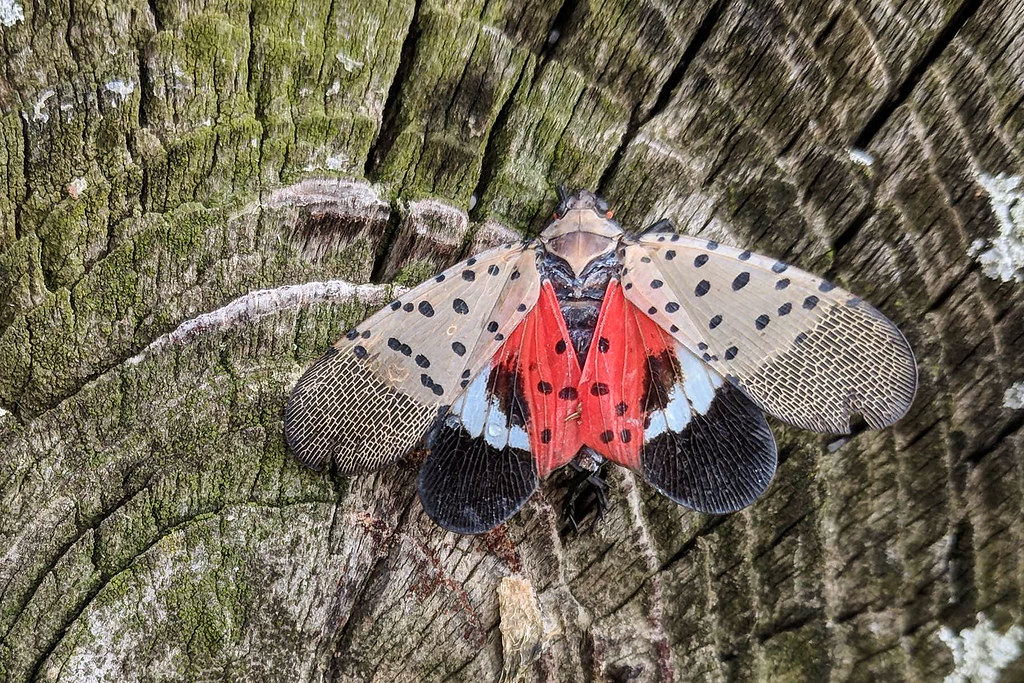The invasive spotted lanternflies sighted all around New York City and surrounding areas have reached an unprecedented high and can potentially wreak havoc on trees and agriculture.
Since its initial arrival in 2014, this invasive species, native to Asia, has proliferated throughout the Northeast, quickly becoming widespread. Nearly a decade ago, the insect was found at a Pennsylvania landscaping company that imported mineral material from abroad.
The flies pose no risk to humans but can raise the cost of food down the road. Since they feed on the sap of over 70 different species of plants, they can easily damage trees and fruit crops.
Spotted lanternflies are a danger to New York’s agriculture, especially to “apples, grapes, hops, maple, walnut and others,” according to the New York State Department of Agriculture and Markets.
From April to June, the spotted lanternfly nymphs hatch from their eggs.
The flies are more noticeable toward the end of summer because that is when they fully transform into adults.
“So far this year, the bugs have been documented riding the subway, littering streets and even infiltrating apartments, evidence of a trend that experts anticipated: New York City’s lanternfly problem is getting worse,” according to The New York Times.
Environmental scientists noted that the bugs are ahead of their schedule this year.
Brian Eshenaur, an entomologist from Cornell University, concurred that the lanternfly population in New York City significantly increased compared to the previous year.
“After the hatch occurred, the warm weather of the spring seems to have accelerated their development,” Eshenaur said. “So, they are now a week or two ahead of last year.”
Despite their wide geographical distribution, it is highly unlikely that the overall lanternfly population will grow at a much higher rate. Lanternflies are unable to survive indoors and don’t consume human food or waste.
Their main source of food is the tree of heaven which is also an invasive species that arrived in North America during the 1700s. Although this tree is common in New York City, there aren’t enough to sustain the flies’ reproduction.
Thus after this seemingly ceaseless and ongoing peak, there is a plateau to be expected in the lanternfly population within the coming weeks.
Experts recommend scraping off egg masses which can be found on the surfaces of trees, branches and furniture. They are often wide splotches that are light in color.
When it comes to sprays, experts advise only using sprays that are approved by the United States’ Environmental Protection Agency to prevent damage to plants and inadvertently create a toxic environment for humans.
Each lanternfly can lay up to 30 to 60 eggs which is why experts are encouraging the stomping method.
“If you see a Spotted Lanternfly in New York City, kill it immediately by stepping on it or crushing it,” according to The Department of Agriculture.
This method is being encouraged to mitigate population growth and ensure that states don’t experience economic crises when it comes to crop distribution in the near future. Stomping on lanternflies may not make a dent in their population but “it can help raise public awareness of the problem while scientists seek a lasting solution.”









Dan Schustack • Sep 20, 2023 at 3:02 pm
Saw one in Haverstraw NY but it got away.
Jeanine • Sep 19, 2023 at 8:59 pm
Where I live in Flushing NY they are on a lot of trees. I try to kill them but it is hard.